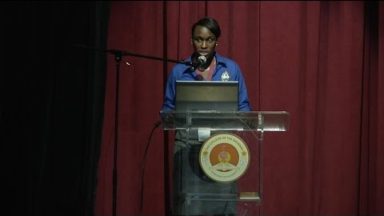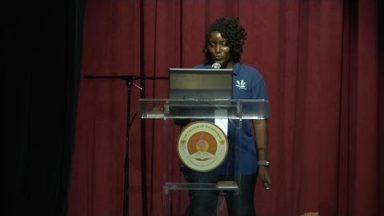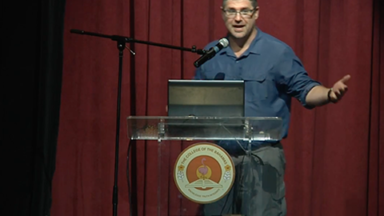Trends in Early Plant-Pollinator Community Recovery Following Three Hurricanes on San Salvador Island.
Presented by Carol L. Landry
Carol L. Landry and Nancy B. Elliott
The purpose of this study is to identify plant and animal species critical to the recovery of coastal plant-pollinator communities following hurricanes. It is part of a larger research program that seeks to understand the mechanisms that maintain biodiversity in Bahamian coastal plant communities by investigating networks of interacting plants and animals. In coastal plant communities, each species is part of a complex system of interacting organisms, living on terrain sculpted by the wind and the sea. Interactions can be positive or negative; therefore, to understand how biodiversity is maintained in these complex communities, it is necessary to study networks of interacting species, such as plants and their pollinators. Here we present trends that we have observed in the recovery of plant-pollinator communities on San Salvador Island following Hurricanes Irene (Category 3; August 2011), Sandy (Category 2; October 2012), and Joaquin (Category 4; October 2015). Work was performed at the same site locations over 6-10 days during the first half of December 2010-2015, and 12 days in October 2011. We recorded vegetative damage within 200 m of the coast, estimated flowering intensity, and recorded floral visitors observed incidentally or during 10-15 minute timed watches. Damage to the vegetation increased with hurricane strength, while floral diversity and community-wide flowering intensity decreased. Depending on the year, we spent 40 – 90 person hours performing timed watches and making incidental observations of floral visitors between 0900 hours and 1630 hours. Pollinator diversity declined with hurricane strength and was correlated with nesting habitat. Relative to non-hurricane years, ground nesting species (e.g. Megachile alleni, Hymenoptera) were less common or absent, stem nesting species (e.g. Xylocopa cubaecola, Hymenoptera) were as common, and species that nest in fresh water (e.g. Palpada albifrons, Diptera) were more abundant.







Recent Comments